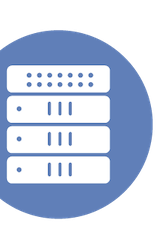|
|
This video is part of the appearance, “Dell Technologies Presents at Security Field Day 13“. It was recorded as part of Security Field Day 13 at 8:00-10:00 on May 28, 2025.
Watch on YouTube
Watch on Vimeo
This session will cover Dell’s overall strategy for cybersecurity including reducing the attack surface, detecting and respond to cyber threats, and recovering from a cyberattack.
In this presentation at Security Field Day 13, Dell Technologies provided a comprehensive overview of their cybersecurity strategy, emphasizing the concept of “advanced cybersecurity maturity.” The speakers explained that Dell aims to help customers progress in their cybersecurity posture by embedding security from the ground up—starting with the supply chain and extending through endpoints, infrastructure, and services. With the rise of AI, the attack surface has expanded, and bad actors have gained access to more sophisticated tools. In response, Dell focuses on three strategic pillars: reducing the attack surface, detecting and responding to threats, and ensuring rapid recovery. Their approach includes building secure hardware (claiming the most secure commercial and AI PCs), utilizing industry-vetted security partnerships, and providing services that align with the Zero Trust model.
Dell’s reduction of the attack surface involves enforcing strong cyber hygiene, emphasizing practices such as regular patching, encryption, multi-factor authentication, and network segmentation. The company views cybersecurity as not only technological but procedural, with detection strategies that incorporate AI/ML-enhanced XDR tools and, where possible, managed detection and response (MDR) services. Their hardware is designed with security baked in, including features like firmware verification and behavioral detection at the BIOS level. They also stress the importance of monitoring, both with built-in capabilities and via partner integrations. Dell aims to give customers not only preventative tools but also detection systems that assume eventual breach, shifting focus toward resilience.
Recovery, as Dell sees it, is the ultimate goal and involves both technology and process readiness. Their solutions include air-gapped cyber vaults and services that support incident response planning, communications, and business continuity. For Zero Trust, Dell supports two paths: an incremental uplift approach for customers with existing investments, and Fort Zero, a pre-certified private cloud solution aligned with the U.S. Department of Defense’s Zero Trust architecture. Fort Zero integrates hardware and software from vetted partners and is delivered as a turnkey system. Dell also supports brownfield environments through consulting services and maturity-based architecture planning. Overall, the presentation framed cybersecurity not as a static goal but as a continual process of improvement, which is rooted in practical frameworks, backed by technology, and supported by Dell’s ecosystem of services and partners.
Personnel: Adam Miller, Sameer Shah, Steve Kenniston








